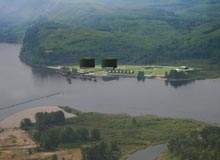
The Bradwood LNG (Bradwood Landing) project was to be the first LNG receiving terminal project approved for construction on the Pacific Northwest coast of the US. Owned by Northern Star Natural Gas LNG of Houston, the LNG facility was to be built on a 55-acre area of a 420-acre site at Bradwood, 38 miles along the Columbia River between Astoria and Clatskanie in Oregon, US.
Approximately $100m was invested in the project. On 4 May 2010, Northern Star Natural Gas suspended the project due to long delays in the processing of state and federal approvals, and the unfavourable investment environment; however, the company stated that the move was a suspension, not a termination. One day after the suspension on 5 May 2010, Northern Star Natural Gas filed for bankruptcy.
In March 2011, the 9th US Circuit Court of Appeals vacated the licence for the proposed Bradwood LNG terminal. The latest development has made the project execution unclear. The project is likely to be cancelled.
Federal approval
In September 2008, the Bradwood project received a Federal Energy Regulatory Commission (FERC) licence (final environmental impact statement) approval for the basic project.
The application was filed with the FERC and required the consideration of 50,000 pages of evidence and 1,827 public comments.
There was strong opposition to the project from several quarters, with the Governor of Oregon, Ted Kulongoski, criticising the federal approval decision and making several appeals. In addition, landowners along the route of the pipeline feared that they would face eminent domain or compulsory purchase on parcels of their land to accommodate the project.
The state of Oregon was urged by a non-profit citizens’ group, Columbia Riverkeeper, which had filed an appeal with the FERC, to refuse the permits and kill the project. Northern Star defended the project, stating that all environmental conditions (109 measures were imposed by the FERC) would be exceeded and that the new LNG terminal was needed to provide a new source of gas for the north-west, where energy prices have increased rapidly in the last few years.
One of the environmental measures involved screening the LNG carrier ballast and cooling water intakes to prevent small river fish from being sucked up. There were also concerns about the dredging of the river to allow the passage of larger LNG carriers.
The initial project would have required dredging operations to remove 700,000 cubic yards of river-bed material and relocating it to other areas of the river, and a yearly 20,000 cubic yard maintenance dredging. In addition to environmental considerations, there were also security elements to the project. Sited in the river, the LNG facility would have had the big advantage of providing a safe sheltered port.
Bradwood construction
Northern Star said that the construction of the pipeline would not begin for two years (originally the LNG facility was to begin construction in 2009) and during that time negotiations will begin with the landowners in Cowlitz County to buy the land they require.
The entire project was to be onstream by 2012, increasing the supply of gas to the area. The LNG receiving terminal was to have a peak send-out capacity of 1.3 billion cubic feet of natural gas per day, and the two storage tanks would have operated as full containment tanks for LNG.
The inner tank was to be constructed from 9% nickel steel and the outer tank of reinforced concrete with a reinforced dome roof. The tank was designed to increase safety because all piping would need to enter through the top of the tank, not through the sidewall or the bottom of the inner/outer tanks.
The Bradwood project also required a 36.3 mile LNG pipeline from the site to Port Westward across Clatsop, Columbia and Cowlitz counties, and then under the Columbia River to connect to the Williams Northwest pipeline at Kelso, Washington. Along the pipeline route, no interconnections and meter stations were required to deliver natural gas to the Georgia-Pacific Wauna paper mill, Northwest Natural Gas Corporation intrastate system, the Portland General Electric Beaver power plant and Williams Northwest.
The project would have created around 450 jobs over the three years of construction, and then a further 65 permanent jobs, contributing about $7.8m in annual taxes to Clatsop County.



